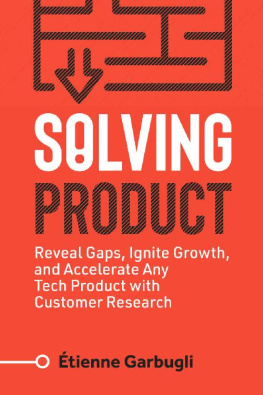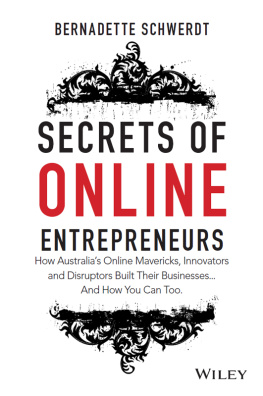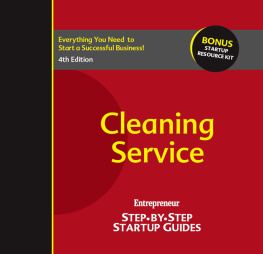About The Book
Finding and validating business opportunities in mid- to large-sized organizations can overwhelm even the most experienced entrepreneurs. Challenges include acquiring domain expertise, building a connected network of influencers, finding the decision makers, understanding the needs of the whole product, estimating a return on investment and reducing the perception of risk. Where should you start and how should you proceed?
Lean B2B helps technology entrepreneurs answer these questions while keeping them focused on the right things each step of the way. Packed with more than 20 case studies and insights from over a hundred entrepreneurs, Lean B2B consolidates the best thinking around Business-to-Business (B2B) customer development to help you quickly find traction in the enterprise, leaving as little as possible to luck.
The book helps you:
Assess the market potential of opportunities to find the right opportunity for your team
Find early adopters, quickly establish credibility and convince business stakeholders to work with you
Find and prioritize business problems in corporations and identify the stakeholders with the power to influence a purchase decision
Create a minimum viable product and a compelling offer, validate a solution and evaluate whether your team has found product-market fit
Identify and avoid common challenges faced by entrepreneurs and learn ninja techniques to speed up product-market validation
Lean B2B
Copyright 2014 tienne Garbugli. All rights reserved.
Editor: Annemarie Vander Veen
Interior Designer: Vivien Leung | Cover Designer: Franois Maisonneuve |
March 2014: First Edition.
Although the publisher and author have used reasonable care in preparing this book, the information it contains is distributed as is and without warranties of any kind. This book is not intended as legal or financial advice, and not all of the recommendations may be suitable for your situation. Professional legal and financial advisors should be consulted, as needed. Neither the publisher nor the author shall be liable for any costs, expenses, or damages resulting from use of or reliance on the information contained in this book.
ISBN-13: 978-1495296604
ISBN-10: 1495296601
Table of Contents
Chapter 1
Introduction
Chapter 2
Where Im Coming From
Chapter 3
The nature of the B2B World
Chapter 4
Where It Starts
Chapter 5
Choosing a Market
Chapter 6
Finding Early Adopters
Chapter 7
Leveraging Domain Credibility & Visibility
Chapter 8
Contacting Early Adopters
Chapter 9
Finding Problems
Chapter 10
Conducting Problem Interviews
Chapter 11
Analyzing the Results
Chapter 12
Finding a Solution
Chapter 13
Creating a Minimum Viable Product
Chapter 14
Preparing Your Pitch
Chapter 15
Conducting Solution Interviews
Chapter 16
Product-Market Fit
Chapter 17
Common Challenges
Chapter 18
Speeding up Product-Market Validation
Chapter 19
Conclusion
Building the knowledge base (Thanks)
Lean B2B would not have been possible without the generous contribution of more than 30 entrepreneurs from Austin, Boston, Montreal, New York, Quebec City, Seattle, Silicon Valley and Toronto.
These successful entrepreneurs took time out of their busy schedules to share stories and insights to help the science of entrepreneurship evolve. For that, I am very grateful.
These CEOs, CTOs and COOs have found success with B2B startups like WePay, Optimizely, Bluestreak Technologies, PunchTab, WP Engine, Vontu, Nstein Technologies, CakeMail, iPerceptions, WhatsNexx, Wistia, Get Satisfaction and many more.
Any of these entrepreneurs with their vision, experiences and insights could have written this book, but it is my opinion that the true value of Lean B2B lies in the variety of perspectives and experiences.
There is no single way to complete the tasks laid out in this book; there are as many ways to cut the cake as there are types of entrepreneurs. Its important to find the approach that best matches your style.
This book contains excerpts from all interviews. My hope is that the insights shared by these entrepreneurs will be as valuable to you as they have been to me.
If I am successful, the knowledge in Lean B2B will not stay inside the book. The science of entrepreneurship evolves quickly, and it is my hope that the community (leanb2bbook.com/community) will be a driving force of fresh B2B customer development ideas.
Join the community to receive updates as new ideas are made available.
Thank you for reading.
To my parents,
for never putting any limits on my potential .
The first part of this section covers the major differences between B2B and Business-to-Customer (B2C) product-market validation; the second part defines the B2B opportunity space and highlights the challenges entrepreneurs face when targeting the enterprise.
Chapter 1
Introduction
WHEN DAVID MET GOLIATH
It was a warm day in the valley. David was sitting in his brand new BMW sweating.
Impressed by the vision of the CEO, David had recently decided to leave a comfortable sales job to join a promising tech startup. The company had a great team, amazing technology and strong leadership, but their product was another six months from launch and the company was running out of money.
The companys CEO, Saul, had made David a partner to convince the star salesperson to jump ship. With three young children at home and an expensive new car to pay for, David had, of late, been wondering if hed made the right decision.
Saul, an experienced salesperson himself, was organizing the vast majority of the client meetings. Davids responsibility was to close the deals.
Today, Davids mission was to sell an unfinished product with an unproven technology to the CEO of the largest pharmaceutical company in the valley. The whole team depended on him for survival.
Selling technology to pharmaceutical executives was nothing new for David; he had just never done it with this little to show. He would have to be very convincing.
As David walked in the executives office, he was taken back to the comfortable life he had left behind. Keeping his job would have been the easiest thing to do, but at 42, it was time for him to give entrepreneurship a try.
The CEO was sitting behind his desk looking at his phone. As David got in, he barely acknowledged his presence.
Taking a quick look at David, the executive signaled him to begin. It was going to be a rough meeting.. .
David was on top of his game. He gave the pitch that he and Saul had been preparing for the last two weeks. By the end of the presentation, the CEO hadnt moved an inch.
To Davids surprise, he came swinging with questions on expected return on investment, data ownership, implementation and switching costs, guarantees and cost structure the CEO clearly had something in mind.











